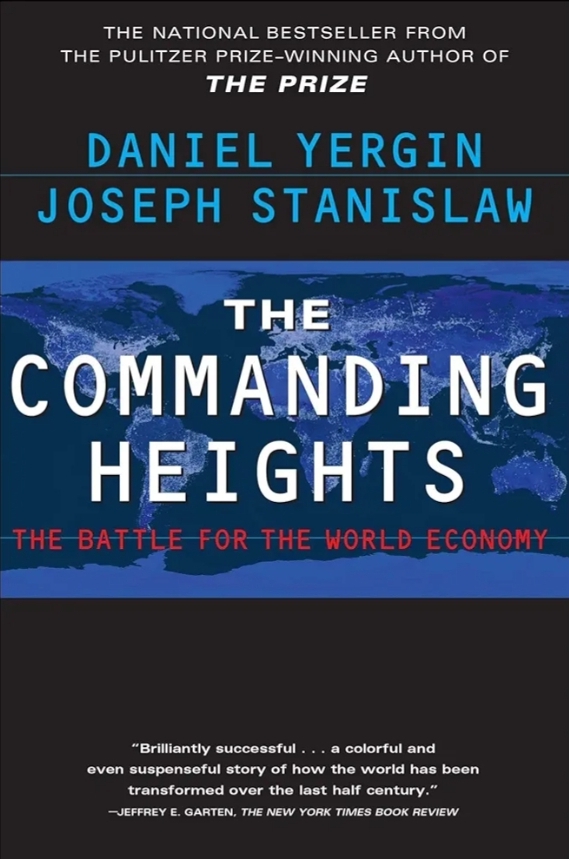Authors: Daniel Yergin & Joseph Stanislaw
Published: 1998
Overview
The Commanding Heights: The Battle for the World Economy is an influential book that examines the struggle between government-controlled economies and free-market capitalism from the early 20th century to the globalization era. The book provides an in-depth historical and economic analysis of the ideological battle between state interventionists (Keynesianism, socialism) and free-market advocates (Hayek, Friedman).
Key Themes and Concepts
The Shift from Government Control to Free Markets
- The book highlights how many economies embraced government control in the early-to-mid 20th century, following the Great Depression and World War II.
- Keynesian economics, which promoted government spending and intervention, dominated until the 1970s.
- The rise of neoliberalism in the late 20th century saw a push toward privatization, deregulation, and globalization.
The Battle Between Keynesianism and Free-Market Capitalism
- John Maynard Keynes argued for state intervention to manage economic cycles, influencing policies like FDR’s New Deal and post-WWII welfare states.
- Friedrich Hayek and Milton Friedman countered this with the idea that government interference distorts markets, advocating for free-market capitalism.
- The stagflation crisis of the 1970s (rising inflation + economic stagnation) weakened Keynesian credibility and strengthened free-market policies under Thatcher and Reagan.
The Fall of Command Economies
- The book discusses how socialist economies (e.g., the Soviet Union, Maoist China) collapsed under inefficiency and lack of innovation.
- The fall of the Berlin Wall (1989) symbolized the triumph of market-driven policies over central planning.
- China’s market reforms under Deng Xiaoping illustrate how controlled economies can shift toward capitalism while maintaining state control.
The Rise of Globalization
- The book argues that globalization was driven by:
- The end of the Cold War and the integration of former communist countries.
- Technological advancements, financial deregulation, and international trade agreements.
- The emergence of multinational corporations and global financial markets.
- The authors see globalization as largely positive but acknowledge risks like financial crises, inequality, and national sovereignty concerns.
The Impact of Economic Crises
- The Latin American debt crisis (1980s), the Asian Financial Crisis (1997), and Russia’s economic collapse (1998) highlight the volatility of market-driven globalization.
- The IMF and World Bank’s role in stabilizing economies through structural reforms is examined, with debate over their effectiveness.
Key Takeaways & Relevance Today
- The book remains relevant in the current debates over globalization, trade wars, government intervention, and financial crises.
- The rise of digital currencies, the role of central banks, and growing concerns over global financial control raise new questions about the balance between free markets and state power.
- The Sovereign Wealth Fund debate, de-dollarization, and alternative financial systems (like crypto) echo the themes discussed in The Commanding Heights.





